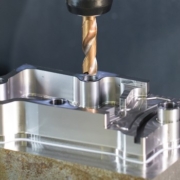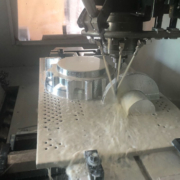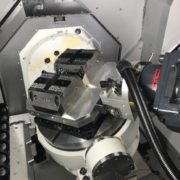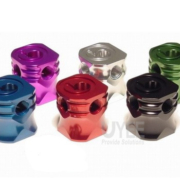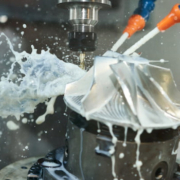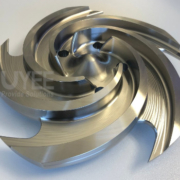The Most Effective Way to Overcome CNC Machine Manufacturing Problem
There isn’t a single piece of technology that isn’t afflicted with at least a few blatant oversights, design faults, or software defects. It’s a rule that applies to all machines, including CNCs. All of our CNC machines must function at the greatest level, and we will not tolerate anything less than that. We refuse to enable our consumers to suffer due to a single mistake or variance in our production process.
Before developing solutions for the five most prevalent difficulties that CNC Milling encounter, we must first identify the problems. To avoid these hazards and keep them from arising throughout our manufacturing process, we must first identify them. What they are and how we handle them are laid forth below.
CHUCKS AND FIXTURES
There are occasions when the chucks and fixtures on CNC machines are insufficiently strong to hold the machined component securely. Vibrations and displacement may occur in this situation, which can cause significant disruption to the manufacturing process. Our answers are primitive, and they almost always include taking a high-level view of the situation. For example, before going on to the next step, we double-check that the item has been properly fastened before proceeding.
We inspect the grips to ensure that they can hold the piece securely, inspect the hydraulic pump and pressure, and inspect the machine to ensure no additional technical concerns, such as footswitch problems or lubrication issues, are present. Because incorrectly grasped machine components may result in machine damage and operator harm, we take great care to ensure that our CNC Milling clutch their materials correctly the first time they are used.
OVERHEATING
Our CNC machines are virtually continually in operation due to the extraordinarily large number of orders we get from our customers. As a result, we must consider overheating as a consideration. Fortunately, we prepare ahead of time to ensure that all of our equipment is in peak operating condition. It’s vital to note that the fundamental function of CNC Milling entails the production of heat as a natural byproduct. Our machine tools can reach temperatures of up to 150 degrees Celsius or more. We must take precautions to ensure that our equipment or the item in issue is not harmed.
We believe that cleanliness is essential, and we make certain that our machines are fully cleaned and that all debris and dirt have been eliminated. Metal shavings may significantly impact overheating, so we maintain a rigorous cleaning routine. Overheating may, however, result from a variety of different factors. Running a CNC machine at high RPMs for an extended length of time necessitates the observance of certain requirements.
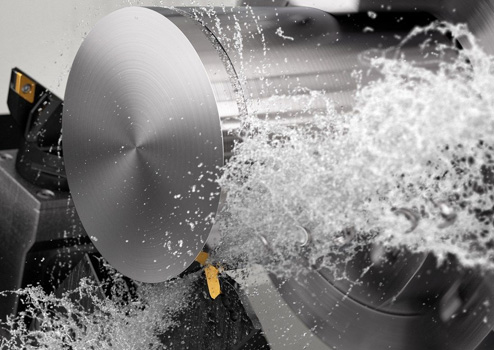
OPERATOR TRAINING
Human error is unavoidable in every organization, but it may be reduced to a minimum via good training and adherence to established procedures. CNC Turning, for example, entails instructing our operators on how to use the CNC software that controls each machine and a complete grasp of G and M codes, machine setup, and data input.
Machines can merely do a task; the human aspect makes the difference. It is something we hold in the highest regard, and it is reflected in the expertise of our operators. It is how we continue to satisfy customers all around the globe in a diverse range of vital business areas.
POWER SUPPLY ISSUES
True or not, the most prevalent issue is sometimes also the most fundamental. CNC Turning are very complicated, and issues with the power supply might slow them down. It may often manifest itself in incompatibilities between the machine in issue and the particular power outlet in question.
We ensure that our CNC machines are powered by power supplies that are compatible with the machines and have the voltage settings necessary for the input side. Suppose we suffer power supply problems that are more severe than that. In that case, we call in qualified electricians to ensure no abnormalities with our power supplies on the other end of the connection before proceeding. During a CNC machining cycle, stable power flow is critical, and we do frequent inspections to ensure that our machines are operating at optimal efficiency and reliability.
WRONG TOOLS OR SETTINGS
Choosing the suitable cutting tools and settings is necessary before beginning a production run to ensure a satisfactory outcome. A failure to do so may damage the end product in the form of burn marks, rough edges, corners, or visible cutter markings, all of which are undesirable and should be avoided. It is a typical problem with many precision machining firms, and it really shouldn’t be the case at all.
In the light of our long history in the industry, we are fortunate to be in the lead on this topic. Despite this, it is regarded as one of the most difficult difficulties CNC Turning have to deal with. The answer may be found in the early phases of planning. Make a point of determining the appropriate tool for the task early on, and do a trial run to ensure that everything is in working order. If this is not done, one may wear out their equipment more quickly than they intended while also harming their client’s project.
Conclusion
No matter how time-saving it is to diagnose and cure the issues with your equipment on your own, there will always be scenarios in which the problems are beyond your ability to fix. Contact us if you’d like to learn more about how our focus on quality and attention to detail has helped us become a top Precision Machining company.

